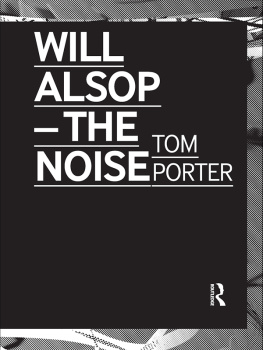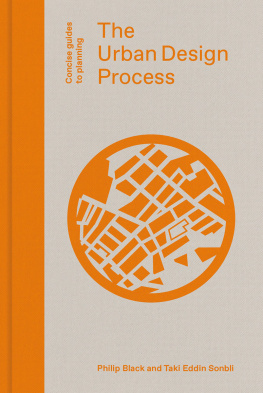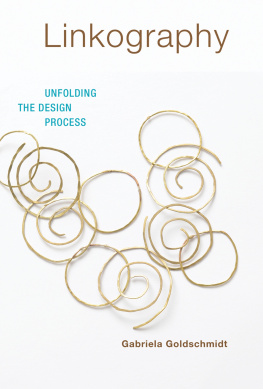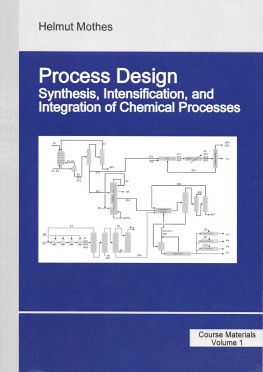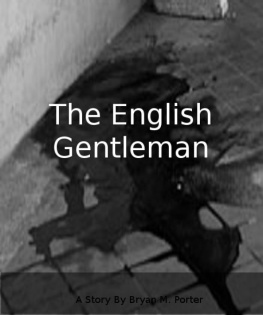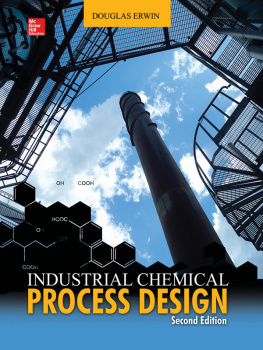Porter Tom - Will Alsop
Here you can read online Porter Tom - Will Alsop full text of the book (entire story) in english for free. Download pdf and epub, get meaning, cover and reviews about this ebook. year: 2014, publisher: Routledge;Taylor & Francis (CAM), genre: Romance novel. Description of the work, (preface) as well as reviews are available. Best literature library LitArk.com created for fans of good reading and offers a wide selection of genres:
Romance novel
Science fiction
Adventure
Detective
Science
History
Home and family
Prose
Art
Politics
Computer
Non-fiction
Religion
Business
Children
Humor
Choose a favorite category and find really read worthwhile books. Enjoy immersion in the world of imagination, feel the emotions of the characters or learn something new for yourself, make an fascinating discovery.
- Book:Will Alsop
- Author:
- Publisher:Routledge;Taylor & Francis (CAM)
- Genre:
- Year:2014
- Rating:3 / 5
- Favourites:Add to favourites
- Your mark:
- 60
- 1
- 2
- 3
- 4
- 5
Will Alsop: summary, description and annotation
We offer to read an annotation, description, summary or preface (depends on what the author of the book "Will Alsop" wrote himself). If you haven't found the necessary information about the book — write in the comments, we will try to find it.
Will Alsop — read online for free the complete book (whole text) full work
Below is the text of the book, divided by pages. System saving the place of the last page read, allows you to conveniently read the book "Will Alsop" online for free, without having to search again every time where you left off. Put a bookmark, and you can go to the page where you finished reading at any time.
Font size:
Interval:
Bookmark:
WILL ALSOP THE NOISE
Driven by his three tenets of architecture, Diversity, Individuality and Naughtiness, Will Alsop paints his way into architecture through a design process that acts as a conduit for the dreams and aspirations of others. Moving from public consultation to the privacy of his painting studio it is here, born in the liquidity of paint, the flourish of line and the serendipity of collage, that Alsop disengages from cultural baggage, discards the tyranny of taste and opens up to a world of less predictable and more diverse solutions.
Whether the world approves of these designs or not does not devalue the artistic process which produces such rich, varied, challenging and extraordinary outcomes. Tom Porter traces and reveals the inclusive and more private phases of this unusual procedure, and in doing so uncovers a treasure trove of ideas for transforming the process of architectural design.
Whether a working architect or a student embarking on the first steps towards creating your own design process, this book offers an insight and example into how engaging with the public, before painting into architecture, can offer the most stimulating and inspirational solutions.
Tom Porter was an author, lecturer and colour consultant, and a Visiting Fellow at Oxford Brookes University, UK. He was also a Visiting Professor at Florida A&M University and Montana State University, USA.
Toms international career included lecture tours, most notably at Harvard, and colour workshops in Norway and Switzerland. He formed close professional relationships that spanned 30 years with other internationally renowned colour experts such as Jean Philippe Lenclos and Giovanni Brino. He also collaborated with Robert Cumming for the BBC series The Colour Eye.
Tom published 21 books during his career including Colour for Architecture, which was updated to become Colour for Architecture Today, and Archispeak.
First published 2011
by Routledge
2 Park Square
Milton Park
Abingdon
Oxon
OX14 4RN
Simultaneously published
in the USA and Canada
by Routledge
270 Madison Avenue
New York
NY 10016
Routledge is an imprint
of the Taylor & Francis Group,
an informa business
This edition published in the Taylor & Francis e-Library, 2010.
To purchase your own copy of this or any of Taylor & Francis or Routledges collection of thousands of eBooks please go to www.eBookstore.tandf.co.uk.
2011 Tom Porter
All rights reserved. No part of this book may be reprinted or reproduced or utilised in any form or by any electronic, mechanical, or other means, now known or hereafter invented, including photocopying and recording, or in any information storage or retrieval system, without permission in writing from the publishers.
British Library Cataloguing in Publication Data
A catalogue record for this book is available from the British
Library.
Library of Congress Cataloging-in-Publication Data
Porter, Tom.
Will Alsop The Noise/Tom Porter.
p. cm.
Includes bibliographical references and index.
1. Alsop, Will--Psychology.
2. Painting--Psychological aspects.
3. Creation (Literary, artistic, etc.)
4. Architects--Psychology.
5. Architectural design. I. Alsop, Will. II. Title.
NA997.A58P67 2010
720.92--dc22
2010004267
ISBN 0-203-84768-7 Master e-book ISBN
ISBN13: 978-0-415-54961-5 (pbk)
ISBN13: 978-0-203-84768-8 (ebk)
WILL ALSOP THE NOISE
TOM PORTER

For Andre and Sheila.
The author would like to thank the following for their generous support and help in supplying valuable comment, information and encouragement during the course of this books preparation: Charles Bear, Ivan Bellucci, Alan Brookes, Roderick Coyne, George Dombek, Charles Knevitt, Hazel Lushington, Caroline Mallinder, Thor Mann, Henk Mihl, Conway Lloyd Morgan, Katherine Morton, Alessandra Orlandoni, enn Ots, Roi Pantaleoni, Holly Porter, Jack Pringle, Richard Rose-Casemore and Andrew Stonyer, Sincere gratitude is extended to Tim Thornton for helping to compile the illustrations and also to Amanda Marshall, Bruce McLean, ed Norman, Philip Richards, George Wade and, above all, to Will Alsop who unstintingly gave of their time and helped make the writing process such a pleasurable adventure. Finally, the author owes a special debt to Francesca Ford who shepherded this book from inception to reality.
The author and publishers would like to thank Will Alsop for giving permission to reproduce the majority of the illustrations contained in this book. While copyright holders and photographers of other material have been contacted and credited, if any omissions or errors have been made we will be happy to correct them at a later printing.
As a fine art student in the late fifties, when I became interested in his Purism theory, Le corbusier was initially known to me first and foremost as a painter. It was only later that I realized that the Purist rules, explored through the medium of paint on canvas in tandem with Amde Ozenfant for refining and simplifying form and dispensing with ornamentation, were a rehearsal for Le corbusiers ensuing and epic architectural contribution to Modernism and a machine-age aesthetic. However, I also came to learn that the relationship between his painting and architectural activities, like his reputed penchant for cross-dressing, was separated by a work regimen divided by the two halves of the day Le corbusier spending the morning painting, and dressing for the part, and the afternoon, assuming more formal garb and donning his trademark bow tie, working as an architect. On subsequently visiting his atelier atop the Molitor Building in the Porte dAuteuil district of Paris I also realized that his double life was also reflected in the two clearly demarcated studios separated by a large central pivoting door one custom-designed facing east and dedicated to painting and the other, facing west, specifically for designing architecture. Although I came to realize that Le corbusiers persona embraced both the role of the artist and the architect being considered by many as the epitome of the total artist the expression of this duality not only smacks of a split personality but it also reflects the schism that, despite the attempt at a full-blooded transfusion during the Baroque period, had caused the gradual separation of fine art and architecture into discrete disciplines. However, this schism had not always existed. According to the theory proposed by Op artist Victor Vasarely, this bifurcation results from two major influences that can be traced back to the Renaissance the very period when the architect, the painter and the sculptor, equipped with an intelligence capable of multi-channelled expression, could be one and the same person. Firstly, the increasing separation and specialization of roles within art and science, and, secondly, the birth of the notion of the independence of the work of art which, spurred on by the beginnings of archaeology in the 1440s, was fuelled by increasing interest in the detached and surviving relics of the ancient Roman culture which became collectable as portable art objects to be displayed and admired in their own right. However, it was during the mid-nineteenth century, when the separation of artists and architecture finally became compounded by the revolution in economic development caused by industrialization, the advent of Modernism and the implementation of capitalist economics. With capitalism came a shift of patronage from church and state which left the artist marginalized literally cut adrift from society. Finding themselves alienated, impoverished and metaphorically homeless within the culture of a capitalist society, artists saw themselves as Bohemians vagabonds who actively opposed established authority and conventional wisdom. Bohemianism not only created the still-lingering stereotype of the starving artist, but it also spawned the notion of the avant-garde and the primacy of an art for arts sake, i.e., exclusively concerned with itself and providing an aesthetic experience that was essentially independent of any utilitarian or socio-cultural agenda. Moreover, the term avant-garde as it is understood today emanates from this period and is found in the writings of charles Baudelaire who clarified the position of the artist as a maverick intellectual and as self-alienated from the emerging bourgeois culture and changing nineteenth-century capitalist dynamic. A sad by-product of this legacy today is the occasional attempt to reintegrate the artist into the design process of the built environment usually to bring a splash of colour to a faade or to embellish a space. There is also the tragedy of a so-called public art. Occasionally portrayed as art escaping from the rarified atmosphere of the gallery and museum and into the public domain, it is equally derided. This is due to the casual dumping of third-rate and self-indulgent sculptures that, more often than not, are characterized as turds in the piazza. Having personally crossed the divide from fine art into architectural education in the sixties, this writer later became aware of and excited by the early projects, both unbuilt and realized, of Will Alsop an enthusiasm and source of inspiration shared by successive cohorts of both local and visiting Erasmus Diploma students. Here was an architect whose design work often viewed as outrageous and controversial by the mainstream had, it seemed, seamlessly and successfully transferred from the exuberant experimentation of his student days into the professional realm. Moreover, Alsop represents a new and singular breed of architect whose
Font size:
Interval:
Bookmark:
Similar books «Will Alsop»
Look at similar books to Will Alsop. We have selected literature similar in name and meaning in the hope of providing readers with more options to find new, interesting, not yet read works.
Discussion, reviews of the book Will Alsop and just readers' own opinions. Leave your comments, write what you think about the work, its meaning or the main characters. Specify what exactly you liked and what you didn't like, and why you think so.

